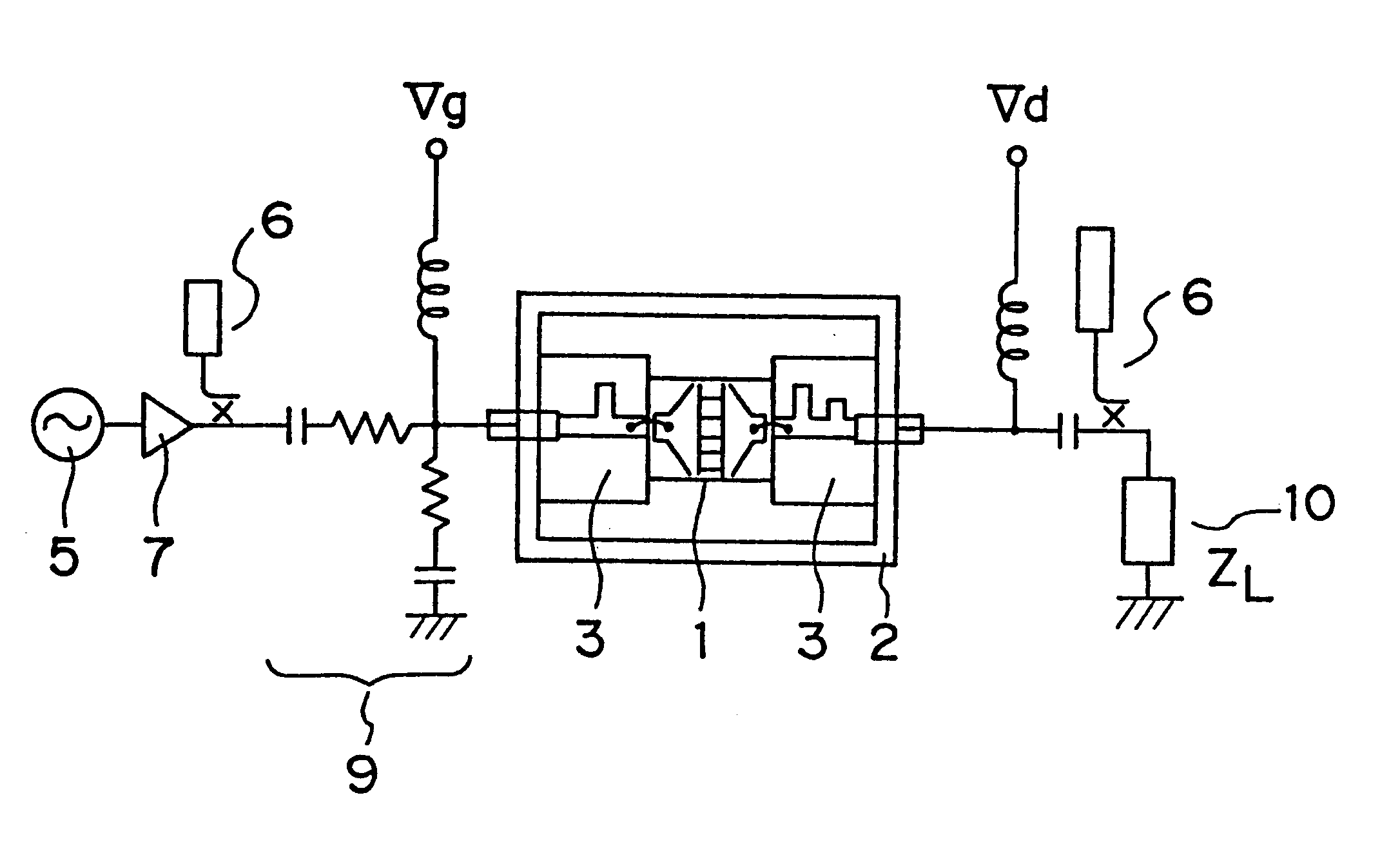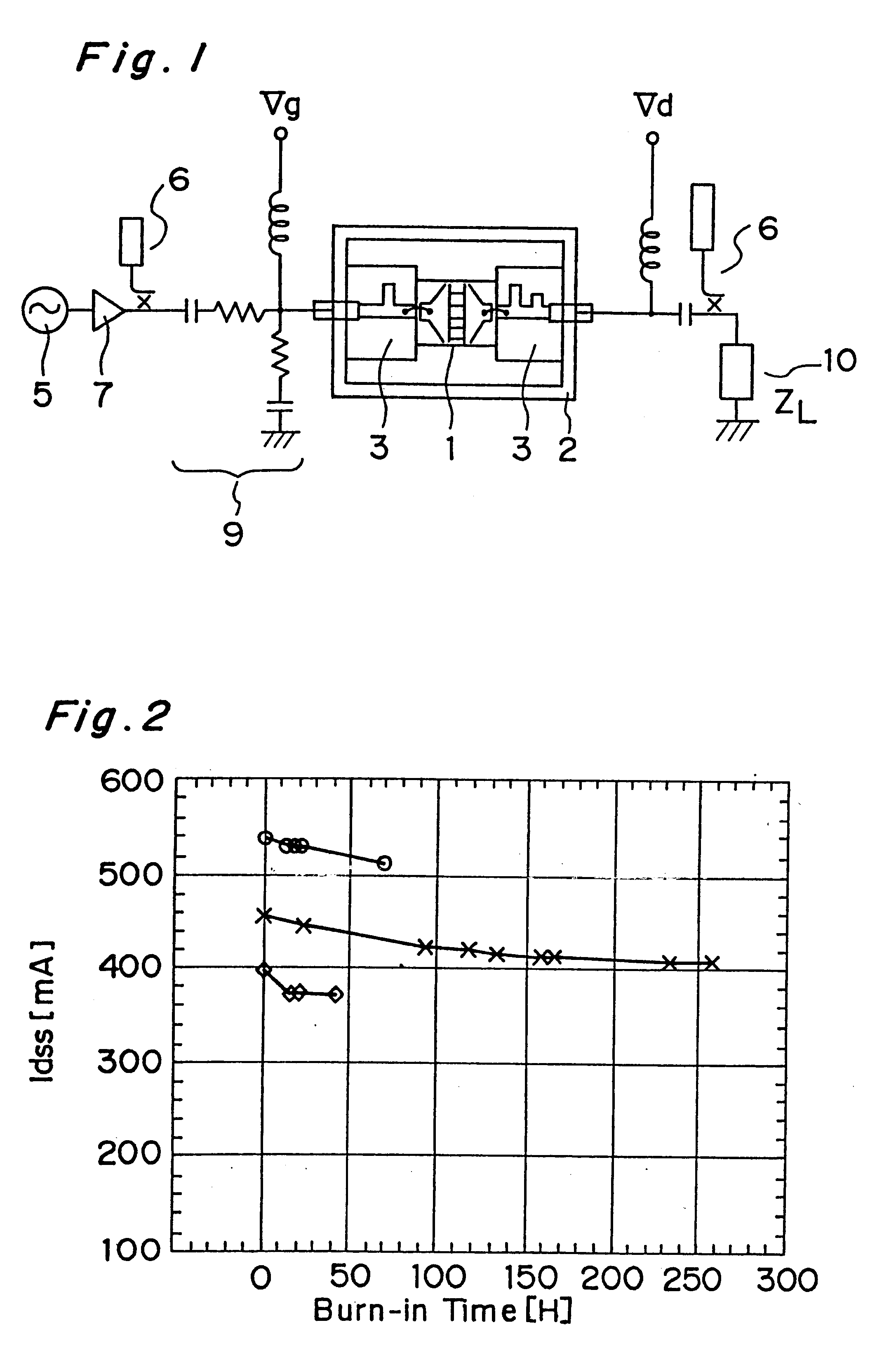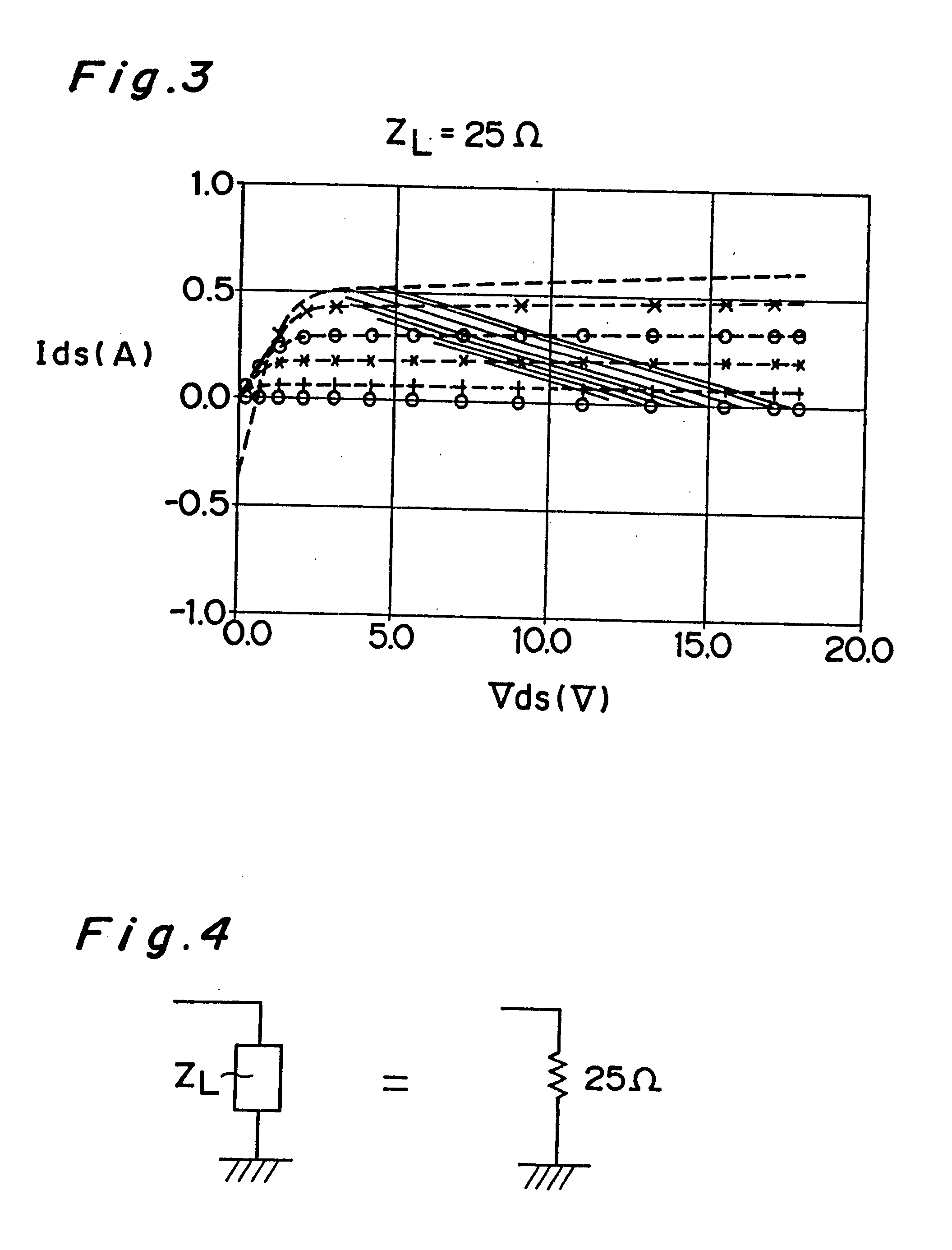Microwave transistor subjected to burn-in testing
- Summary
- Abstract
- Description
- Claims
- Application Information
AI Technical Summary
Benefits of technology
Problems solved by technology
Method used
Image
Examples
first embodiment
the present invention will now be described below with reference to FIGS. 1 to 5.
According to this embodiment, an internally matched GaAs FET operating at 18 GHz in class A or class AB operation (having a matching circuit for 18 GHz incorporated in the package) is burned in.
FIG. 1 is a schematic diagram showing one channel portion of a burn-in apparatus which bums in a device having an operating frequency of 18 GHz at a burn-in frequency of 800 MHz. In the drawing, reference numerals identical with those used in FIG. 14 denote the same or corresponding portions. Numeral 10 denotes a resistive load, 9 denotes an input side low-frequency matching circuit and 10 denotes an output side low-frequency matching circuit.
In FIG. 1, the semiconductor device to be burned in is an internally matched FET as described above, and therefore a matching circuit 3 for 18 GHz is incorporated in the package 2. However, at a low frequency such as 800 MHz, parasitic capacitance and inductance of the match...
embodiment 2
A second embodiment of the present invention will now be described below with reference to FIGS. 5 to 10.
In contrast to the first embodiment wherein an FET used in class A operation is burned in, this embodiment refers to a burn-in process of internally matched GaAs FET used in class C or class F operation at a frequency of 18 GHz.
While class B or class F operation is employed in order to achieve high-efficiency transistor operation, a sufficient load cannot be applied to the FET by simply using 1 S a resistor for the load 10, as in the first embodiment. For the transistor used for such a high-efficiency class of operation, it is necessary to take into consideration the effect of harmonics being generated.
FIG. 5 shows a load (Z,) which is matched for high frequency for use in burn-in of an FET designed for class B operation in this embodiment. In the drawing, L and C are parameters which cause resonance at the burn-in frequency (800 MHz), namely that satisfy the relationship 2.pi.f=...
embodiment 3
A third embodiment of the present invention will now be described below with reference to FIGS. 11 and 12.
While the first and the second embodiments relate to the burn-in process of an internally matched GaAs FET used in class A, class C, or class F operation, there are others which show complicated load curves as shown in FIG. 11.
In order to burn in such an internally matched GaAs FET, there is a method of low-frequency burn-in at 800 MHz, wherein substantially the same electrical stress as that of the operating frequency, 18 GHz, is applied to the transistor by using a virtual load having a characteristic curve that passes through the points (Id1, Vd1), (Id2 , Vd2), and (Id3, Vd3) of FIG. 11.
When such a method is used, burn-in effect similar to that obtained under the conditions of FIG. 11 can be achieved by using a combination of R, L, and C for the load (ZL) 10 of the burn-in apparatus shown in FIG. 1. An imaginary load curve determined by the combination passes key points (a po...
PUM
 Login to View More
Login to View More Abstract
Description
Claims
Application Information
 Login to View More
Login to View More - R&D
- Intellectual Property
- Life Sciences
- Materials
- Tech Scout
- Unparalleled Data Quality
- Higher Quality Content
- 60% Fewer Hallucinations
Browse by: Latest US Patents, China's latest patents, Technical Efficacy Thesaurus, Application Domain, Technology Topic, Popular Technical Reports.
© 2025 PatSnap. All rights reserved.Legal|Privacy policy|Modern Slavery Act Transparency Statement|Sitemap|About US| Contact US: help@patsnap.com



